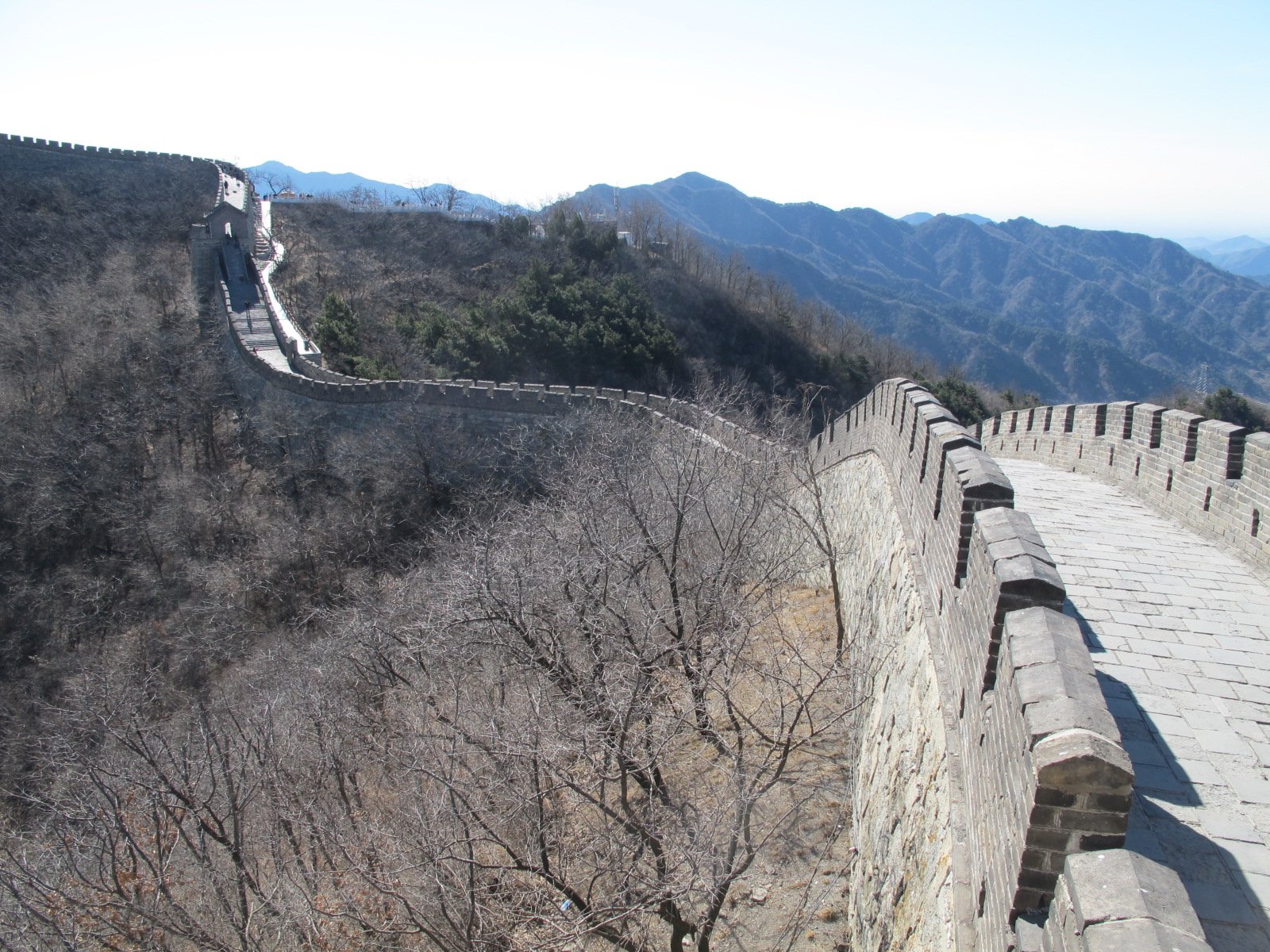On day 2 we met our guide even earlier and headed out of Beijing for the Mutianyu section of the Great Wall of China. It took something like a half hour to get out of the city and another hour passing agricultural fields and small villages to reach the Wall. Like everything else in China, the support infrastructure for a major sight like the GW is well developed. After we left the big parking lot for buses we passed lots of shopping and food options on our way to the ticket office. But all tastefully done and in good shape. Eschewing the option of climbing up to the Wall (this is one of the mountainous sections), Maia and I bought tickets for the cable car. A European-style, 8-person cable gondola whisked us up to the Wall.
Our weather karma had held for a second day and we were greeted with crystal clear air and blue skies for our GW experience. It was glorious! We grabbed a snack at the upper cable car station and headed up onto the wall. The Mutianyu section has been heavily restored, so the wall is in great condition. Guard towers dot the expanse at regular intervals and the wall itself snakes along the ridge of the undulating terrain. Iconic views welcomed us and drew us along as we hiked for a few kilometers in each direction. We had to vie with Chinese tourists and their selfie sticks for unpopulated views. But overall, it was not crowded in the least. Our small group of 9 seemed to be about the only westerners around. Although we did meet a fellow from Seattle who took our pictures.
After about an hour of wandering and snapping photographs we decided it was time to descend. Options included a second cable car, a toboggan (luge), or walking. We opted to walk down. Our feet and legs were pretty sore by the time we got down but it was certainly worth it.
As is so often the case, photos of the GW tell better stories than my words. I’ll let them do the talking.





